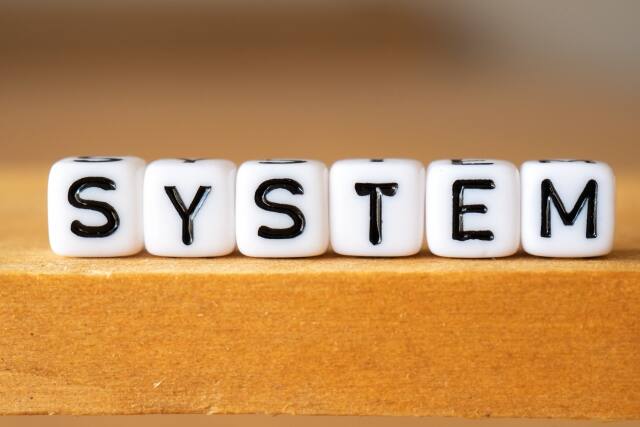What is Preventive Maintenance that Prevents Sudden Troubles? Implementation Methods and Long-Term Benefits
This section explains what preventive maintenance is, how to implement it, and the long-term benefits companies can gain from adopting it. Achieve improved productivity and cost reduction through efficient equipment management utilizing sensors. In manufacturing, traditional reactive maintenance often failed to prevent sudden failures and had inefficient aspects. This is where “preventive maintenance” comes into focus.
- Understanding Preventive Maintenance Mechanisms to Achieve Zero Troubles
- Practical Methods for Predictive and Preventive Maintenance: Learning from the Basics
- Long-Term Benefits of Predictive and Preventive Maintenance
- NSXe provides solutions that strongly support predictive and preventive maintenance!
This management approach aims for stable equipment operation and efficient utilization by detecting signs of failure in advance and addressing issues before they become severe.
This section explains what preventive maintenance is, how to implement it, and the long-term benefits companies can enjoy by adopting it.
Understanding Preventive Maintenance Mechanisms to Achieve Zero Troubles


Preventive maintenance is a management approach that proactively captures signs of equipment failure and responds systematically to prevent sudden troubles before they occur. A deep understanding of this mechanism is the first step toward ensuring stable factory operation.
Differences Between Preventive Maintenance and Other Equipment Maintenance Methods
Several primary methods exist for equipment maintenance, each taking a different approach.
First, “Breakdown Maintenance (BM)” is the most basic method, where repairs are performed only after equipment fails. This approach requires emergency response, often leading to lost production opportunities and high emergency repair costs.
In contrast, “Preventive Maintenance” is a method that systematically replaces parts or units at economically determined intervals to prevent sudden equipment failures. One approach is primarily practiced as “Time-Based Maintenance (TBM)”, which involves regular inspections and part replacements based on equipment operating hours or periods. While it offers the benefit of planned execution, there is also a risk of over-maintenance, such as replacing parts that are still usable and functional.
The other is “predictive maintenance.” Predictive maintenance is a type of condition-based maintenance (CBM) that monitors equipment status, detects signs of impending failure before it occurs, and performs maintenance at the optimal time just before failure is likely to happen. It also relies on sensor data and diagnostic results to guide maintenance activities. Predictive maintenance offers the advantage of avoiding sudden troubles, such as those encountered in corrective maintenance, while preventing excessive part replacements common in time-based maintenance. This approach maintains equipment in an optimal state of health. Time-based maintenance and condition-based maintenance (also known as predictive maintenance) are collectively referred to as preventive maintenance.
Technologies and Data Utilization Mechanisms Supporting Predictive and Preventive Maintenance
Implementing predictive and preventive maintenance requires advanced technology and data utilization systems. At the core of this are various types of sensors.
For example, vibration sensors monitor bearing and gear wear in rotating machinery in real time, temperature sensors detect signs of overheating or poor lubrication, and current sensors monitor motor load abnormalities. These sensors capture subtle changes in equipment and collect them as digital data.
The vast amount of measured data is sent to a data collection and analysis system. This system analyzes data using advanced technologies, including machine learning and AI (artificial intelligence), in conjunction with traditional analysis methods. It identifies deviations from normal conditions and patterns specific to particular failure modes.
This mechanism minimizes the risk of sudden production stoppages, enables planned and efficient equipment management, and aims for zero troubles.
Practical Methods for Predictive and Preventive Maintenance: Learning from the Basics


To effectively implement predictive and preventive maintenance, a phased approach and the selection of appropriate tools are crucial. Correct implementation methods maximize the benefits of introducing a system.
Steps for Introducing Predictive and Preventive Maintenance
To introduce and maximize the effectiveness of a predictive and preventive maintenance system, the following steps are recommended.
1. Assessing the Current State and Setting Goals
First, analyze the operating conditions, failure history, and maintenance costs of the equipment to understand its current state. Then, set specific goals you wish to achieve through predictive maintenance.
2. Establish a Data Collection System
To collect core equipment condition data for predictive/preventive maintenance, select sensors that continuously measure physical quantities, such as vibration, temperature, and current, and install them appropriately. Wireless sensors streamline data collection over vast areas.
3. Establishing a Diagnostic and Analysis System
Utilize advanced analysis software and AI to establish a system capable of diagnosing signs of impending failure. Training personnel with specialized knowledge and collaborating with external services are also crucial.
4. Incorporating Findings into Maintenance Plans
Based on diagnostic and analysis results, formulate and execute specific maintenance plans. By proactively addressing predicted failures, you can prevent unexpected shutdowns and maintain optimal system performance.
Practical Technologies and Tools
Effectively implementing preventive maintenance requires leveraging tools provided by modern technology.
Utilizing IoT Sensors
Internet-connected IoT sensors collect equipment status data in real time and transmit it to the cloud. Wireless vibration and temperature sensors can be easily installed without the need for wiring, dramatically improving data collection efficiency. Wi-Fi-enabled sensors offer the advantage of low implementation barriers by utilizing existing network infrastructure.
Data Analysis Software
Specialized data analysis software is essential for analyzing vast amounts of collected sensor data and diagnosing signs of impending failure. This software supports effective data utilization through features like automatic anomaly pattern detection and trend analysis.
Digital Twins
Digital twin technology, which recreates physical factory equipment in a virtual space, elevates predictive and preventive maintenance to the next level. Reflecting real-time anomaly detection sensor data into the digital twin enables faster maintenance operations through the use of visual data. Simulating equipment behavior in the virtual space leads to the formulation and execution of more accurate maintenance plans.
Long-Term Benefits of Predictive and Preventive Maintenance


Predictive and preventive maintenance delivers not only short-term cost savings but also a wide range of long-term benefits for companies. This is key to sustainable factory operations and enhanced competitiveness.
Dramatic Improvement in Productivity and Uptime
The most significant benefit of implementing predictive and preventive maintenance is improved productivity and uptime. By detecting abnormal signs in advance and performing planned maintenance, it significantly reduces the risk of sudden stoppages. This ensures the stable operation of production lines and boosts overall productivity.
Stable operating rates are essential for maximizing a company's production capacity and establishing a competitive edge in the market.
Cost Reduction and Maximization of Asset Value
Predictive and preventive maintenance help reduce equipment management costs. By identifying fault signs in advance, necessary parts can be procured systematically, and repairs can be scheduled, optimizing emergency expenses.
Furthermore, reducing unnecessary part replacements and performing maintenance at optimal times extends the lifespans of equipment and components, thereby optimizing capital investment cycles. This enhances the long-term value of a company's equipment assets.
Enhanced Safety and Reduced Environmental Impact
Predictive and preventive maintenance also contribute to improving factory safety. By detecting abnormalities early and preventing them through predictive and preventive maintenance systems, worker safety is ensured, and accident risks are significantly reduced. A safe working environment also leads to improved employee motivation.
Furthermore, optimal equipment operation improves energy consumption efficiency and reduces unnecessary power consumption and resource waste. It also reduces the disposal of parts due to failure, contributing to a lower environmental impact. By utilizing assets such as equipment and personnel more effectively for an extended period through digital transformation (DX), it contributes to green transformation (GX) and, more broadly, to the circular economy.
NSXe provides solutions that strongly support predictive and preventive maintenance!


NSXe offers “conanair,” a product developed in response to the requests of field personnel responsible for maintenance and repair at factories.
conanair is a Wi-Fi vibration sensor designed for predictive maintenance management by detecting equipment abnormalities, particularly bearing damage. It enables condition monitoring based on vibration data at a low cost of approximately 30,000 yen. It can be easily operated on a web browser, eliminating the need for a dedicated app and significantly reducing the barrier to entry for predictive and preventive maintenance. It can also be easily installed with magnets, and its Wi-Fi connection enables automatic data collection to a PC, periodic measurements using a smartphone or tablet, and even constant monitoring using automatic measurement mode.
For more detailed information, please do not hesitate to contact us.
Try conanair for FREE now !

Please contact NSXe for any issues regarding facility maintenance
| Company Name | NSXe Co.Ltd - Nakayama Hydrothermal Industry Co., Ltd. |
|---|---|
| Head Office | 7686-10 Hirano-cho, Suzuka, Mie513-0835, Japan zip code 513-0835 |
| Phone | +81-90-2189-1398 |
| FAX | +81-59-379-4704 |
| Business Hours | 8:00~17:00 |
| Office Regular
Holiday |
Saturday afternoons, Sundays and public holidays |
| URL | https://conanair.com/ |
Please contact NSXe for any issues regarding facility maintenance
| Company Name | NSXe Co.Ltd - Nakayama Hydrothermal Industry Co., Ltd. |
|---|---|
| Head Office | 7686-10 Hirano-cho, Suzuka, Mie513-0835, Japan zip code 513-0835 |
| TEL | +81-90-2189-1398 |
| FAX | +81-59-379-4704 |
| Business Hours | 8:00~17:00 |
| Office Regular
Holiday |
Saturday afternoons, Sundays and public holidays |
| URL | https://conanair.com/ |










